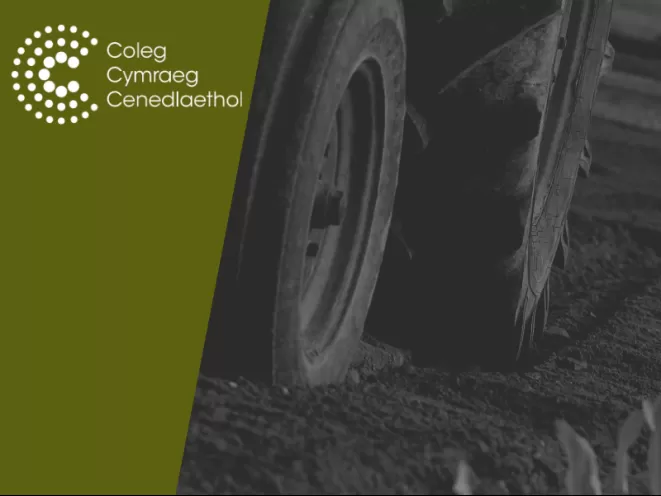Nod y prosiect hwn oedd deall gwasgariad y parasit llyngyr y rwmen yng Nghymru. Gweithiodd gwyddonwyr o IBERS, Prifysgol Aberystwyth, gydag aelodau CFfI ar draws Cymru i ddarganfod ym mha ffermydd yr oedd llyngyr y rwmen yn bresennol.
The role of stem cells in cardiac tissue regeneration: evaluating treatments and identifying risk
This article evaluates the potential of a range of stem cells in cardiac tissue regeneration following a heart attack. Following an initial review of relevant research, some of the main biological mechanisms involved in cardiac tissue regeneration are presented, including: the role of transcription factors, such as oxytocin and c-kit and paracrine transcription factors; studies on zebra fish that display mechanisms such as the regnerative role of cardionogen 1, 2- and 3- in reversing the effect of induced cardiac phenotypes that normally regulate heart development; delivery and engraftment mechanisms, including viral and plasmid vectors, electrical stimulation and nantoechnology. The results of in vitro and in vivo experiments are reported that have shown the clinical potential of stem cells as well as their immunological and tumorgenic risks. At the time of writing (2012), while the clinical evidence is limited, complex therapeutic models are proposed for future development in the field.
Invasive animals and their effects on British freshwater ecosystems
The introduction of non-native species presents one of the most significant threats facing biodiversity worldwide. Freshwater ecosystems are particularly affected, due to the widespread introduction of species to rivers and lakes for aquaculture and fishing. This article describes non-native, freshwater animals that are present and invasive in Britain, as well as those which are likely to become established over the coming years. The effects of these animals on freshwater ecosystems are explained, and problems that are faced when attempting to manage invasive species are highlighted. Additionally, the effects of climate change and other stressors on the future distribution of non-native species are discussed.
This leaf: the nature, origins and purposes of leaf colours
The state of the environment and the passage of time are reflected in the changing colours of the plants around us. Chlorophyll, the green pigment of leaves, captures the energy of sunlight that drives photosynthesis and powers the biosphere. The disappearance of chlorophyll from autumn leaves reveals the yellows and oranges of another family of plant pigments, the carotenoids. Carotenoids protect plants from stresses and are also responsible for the colours of many flowers and fruits. In autumn, the leaves of species such as maples make red and purple anthocyanins, which are members of a diverse family of pigments and defence chemicals. Plants use pigments to send signals to pollinators, dispersers and predators, among which are humans, who have a special physiological and psychological responsiveness to the plant chemistry that colours our world.
Cynhadledd Wyddonol 2019
Cynhaliwyd Cynhadledd Wyddonol 2019 yng Nghanolfan Medrus, Prifysgol Aberystwyth, ar 6 Mehefin 2019. Roedd y gynhadledd yn gyfle i gyflwyno'r ymchwil gwyddonol ddiweddaraf trwy gyfrwng y Gymraeg. Yma ceir casgliad o gyflwyniadau a fideos o'r gynhadledd.
Cyflwyniad i Ecoleg Afiechydon
Mae afiechydon yn medru creu pwysau detholus cryf ar amryw o rywogaethau, gan gynnwys anifeiliaid gwyllt a domestig. Yn y cyflwyniad hwn i faes ecoleg afiechydon, mae Dr Gethin Thomas o Brifysgol Abertawe yn canolbwyntio ar y berthynas rhwng moch daear, gwartheg a'r diciau i esbonio sut mae'r rhyngweithiad rhwng anifeiliaid a'u pathogenau yn faes diddorol a cyfoes.
Predicting contributions by the last glaciers of Eryri (Snowdonia) to Younger Dryas carbon cycling
The concept of glaciers as active ecosystems is strongly supported by evidence of significant contributions to global carbon and macronutrient cycles by extant glaciers. Regrettably, the roles of glacial ecosystems in past glaciations are generally overlooked. Therefore we reconstructed glacial habitats and carbon fluxes on the last glaciers of north Wales at their maximum extent during the Younger Dryas chronozone glaciation. Net uptake of 30-180 kg C of CO2 and emissions of 265-1591 g C CH4 per annum are estimated for the palaeoglaciers. This emphasises the hitherto unexplored potential for the last Welsh glaciers as actors in biogeochemical cycles; however our understanding could be extended by linking our knowledge of contemporary glacial ecosystems with analyses of sedimentary biomarkers and thermomechanical models of Devensian ice mass dynamics.
Biodiversity Workshops
Resources created from biodiversity workshops held with AS and A level students. The aim of the workshops was to provide students with experience of electrophoresis, PCR (Polymerase chain reaction) techniques and the ways in which they are applied.
Laboratory Experiments and Techniques
A series of short film clips featuring Dr Heledd Iago demonstrating the various important steps in laboratory experiments and techniques across the Biological Sciences.









